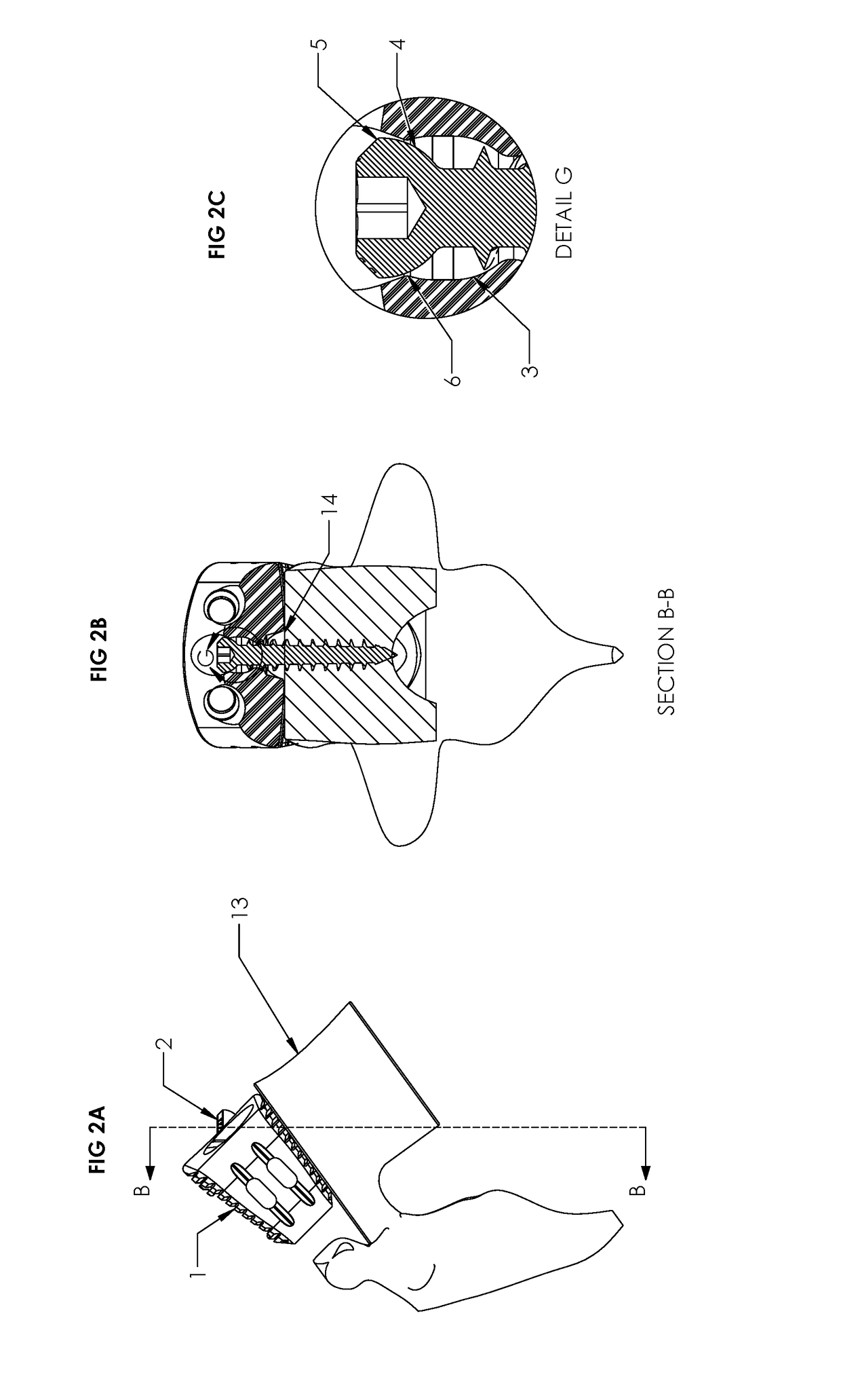Spinal Implant with Screw Retention and Removal Mechanisms
- Summary
- Abstract
- Description
- Claims
- Application Information
AI Technical Summary
Benefits of technology
Problems solved by technology
Method used
Image
Examples
Embodiment Construction
[0025]Referring to FIG. 1A, the interbody implant consists of a polymer spacer body 1 and a plurality of bone screws 2 used to secure the polymer implant 1 to the surrounding vertebral bodies 13.
[0026]Referring to FIGS. 1B& C apertures 11 in the polymer implant 1 are fabricated with a cavity 3 designed to allow passage of the threaded portion 16 of the bone screw 1 and to capture and accommodate the hemispherical shaped head 4 of the bone screw 2.
[0027]One opening of the cavity 3 has an annular feature 6 that is smaller in diameter than the hemispherical diameter of the bone screw 4 head. An opposing opening in the cavity 3 has a spherical shaped surface 14 and reduced diameter passage 15.
[0028]Referring to FIGS. 2A, B & C, as the bone screw 2 is being threaded into the vertebral end plate 14, its hemispherical head 4 will come in contact with the smaller diameter region 6 of the implant bone screw aperture 11. Referring to FIGS. 3A, B & C, during the bone screw 2 placement portion ...
PUM
 Login to View More
Login to View More Abstract
Description
Claims
Application Information
 Login to View More
Login to View More - R&D Engineer
- R&D Manager
- IP Professional
- Industry Leading Data Capabilities
- Powerful AI technology
- Patent DNA Extraction
Browse by: Latest US Patents, China's latest patents, Technical Efficacy Thesaurus, Application Domain, Technology Topic, Popular Technical Reports.
© 2024 PatSnap. All rights reserved.Legal|Privacy policy|Modern Slavery Act Transparency Statement|Sitemap|About US| Contact US: help@patsnap.com










